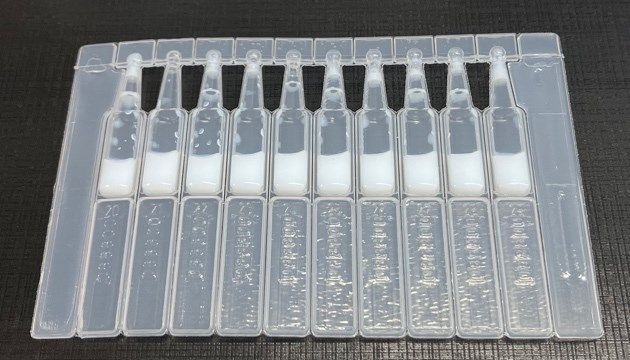Article
Skye Bioscience and NextPharma complete production and filling of SBI-100 in preparation for upcoming phase 2a clinical trial
Author(s):
The company announced its contract manufacture, NextPharma, completed filling of the drug materials into strips of 10 single-use vials for use in upcoming glaucoma trial.
(Image Credit: AdobeStock/mim)

Skye Bioscience announced its contract manufacturer, NextPharma Oy in Finland, has completed production of placebo and SBI-100 Ophthalmic Emulsion ("OE") for its planned Phase 2a study of glaucoma and ocular hypertension. NextPharma has also completed filling of the drug materials into strips of 10 single-use vials.
According to a press release from the company1, SBI-100 OE is a “proprietary, synthetic cannabinoid derivative to treat glaucoma and ocular hypertension.”
Tu Diep, chief development officer, Skye Bioscience, discussed the company’s partnership with NextPharma in the press release.
"We selected NextPharma as our contract manufacturer to position ourselves for eventual commercial manufacturing including drug formulation, fill and finish capabilities, and rigorous quality systems," said Diep. "We needed to transfer our drug production process to them and have them evolve and implement the necessary procedures to produce our drug at scale. Their expertise and our commitment to collaboration ensured that this technology transfer has gone well.”
Example of NextPharma single-use vial strip for Skye clinical study (Image Credit: Skye Bioscience)

Regarding the upcoming clinical trial, Diep added, “This study, which we expect to start enrolling in the third quarter, will for the first time ever primarily focus on the efficacy of a synthetic pro-drug in human subjects targeting the CB1 receptor of the endocannabinoid system with the goal of reducing intraocular pressure of the eye."
Skye Bioscience previously announced the submission of the Investigation New Drug Application with the FDA for SBI-100 back in November of 2022. In a press release from the announcement2, the company stated that the Phase 2 trial “is intended to be a multi-center, double-masked, randomized, placebo-controlled, dose-response study assessing the ocular hypotensive efficacy, safety and tolerability of two concentrations of SBI-100 Ophthalmic Emulsion in patients with elevated intraocular pressure.”
The company also stated steps remain to be completed to enable the start of the study including:1
- quality assurance release of the clinical product to ensure the drug product meets specification
- receipt of Finland/US export/import licenses for the clinical study material
- packaging and shipment of product from Finland to the US
- preparation of kits for the Phase 2a clinical trial subjects
- US DEA approvals of the clinical trial sites; and an update of the IND to reflect the final clinical trial protocol information.
References:
Skye Bioscience Completes Production and Filling of Investigational Drug Material in Preparation for Phase 2a Glaucoma Clinical Trial. Press Release. Skye Bioscience; July 6, 2023. Accessed July 6, 2023. https://ir.skyebioscience.com/news-events/press-releases/detail/170/skye-bioscience-completes-production-and-filling-of
Skye Bioscience Submits Investigational New Drug Application for SBI-100 Ophthalmic Emulsion to FDA. Press Release. Skye Bioscience; November 17, 2022. Accessed July 6, 2023. https://www.newsfilecorp.com/release/144594/Skye-Bioscience-Submits-Investigational-New-Drug-Application-for-SBI100-Ophthalmic-Emulsion-to-FDA
Newsletter
Don’t miss out—get Ophthalmology Times updates on the latest clinical advancements and expert interviews, straight to your inbox.




